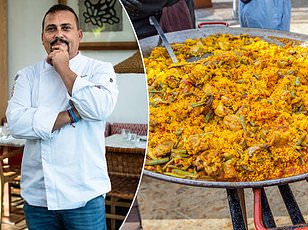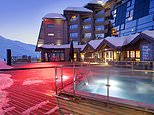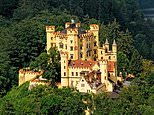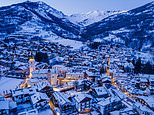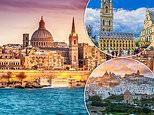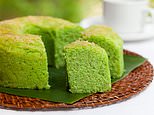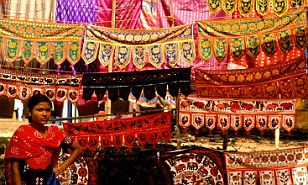I'm on the Mail's travel team - here are 10 reasons Tokyo should be on your bucket list for 2025
- Tokyo may seem like an alien city - but don't let that put you off
- So says Harriet Sime, who highlights its views, trains, posh hotels and more...
- READ MORE: Inside Val Thorens, the ski resort that's rated the best on the planet
Touching down in Tokyo is like landing on a different planet, with few - if any - familiarities.
But don’t let that put you off.
There are lots of reasons it should be on your bucket list for 2025 – and ten of them are below, from sumo wrestling to fascinating temples and world-class hotels.
GETTING AROUND IS A CINCH
The city is safe and easy to navigate - the subway signs are in English and lines are colour-coded.
IT SUITS TIGHT BUDGETS
It’s incredibly cheap. In this year’s Post Office Travel Money report, Japan topped the table as the cheapest long-haul destination thanks to the pound performing well against the Japanese yen.
SUMO WRESTLING
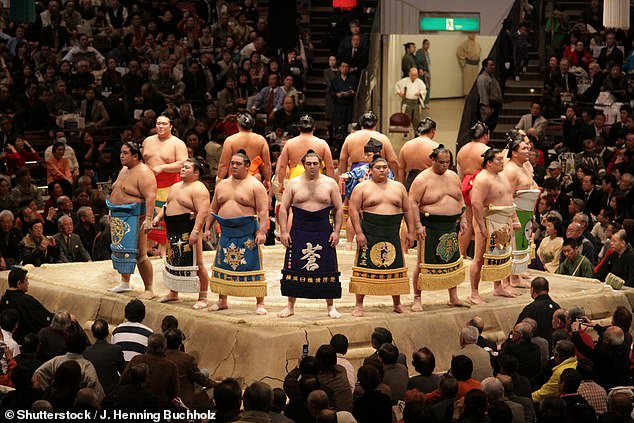
Harriet Sime watches a sumo wrestling match in Tokyo (file image) and says 'it's a thrill to witness such an ancient and traditionally secretive sport up close'
Sumo wrestling as a spectator sport is seeing growing interest from foreign tourists in Tokyo, resulting in dining experiences cropping up all over the city for when the official sumo tournaments (basho), which take place six times a year (January, May and September), aren’t in action.
At Asakusa Sumo Club in the heart of Tokyo, tourists sit on tables around a 4.5-metre-wide clay-filled ring, known as a ‘donyu’, to watch two former professional sumo wrestlers battle it out in a three-round competition.
The two-hour interactive show begins with a traditional geisha dance before the MC introduces the wrestlers and the guests are presented with sake and trays of chanko-nabe’ - a hearty chicken and shiitake mushroom stew traditionally eaten by wrestlers, along with edamame, tofu-wrapped rice and fried chicken. Before the first round begins, the wrestlers, dressed in red and black mawashis, throw handfuls of salt into the ring as a symbol of good luck.
And then they’re off, shoving, thrusting and grabbing in an attempt to manoeuvre one another to the ground or out of the ring (winning techniques).
It’s a thrill to witness such an ancient and traditionally secretive sport up close - and a must-visit when exploring Japan (getyourguide.co.uk).
WORLD-CLASS HOTELS
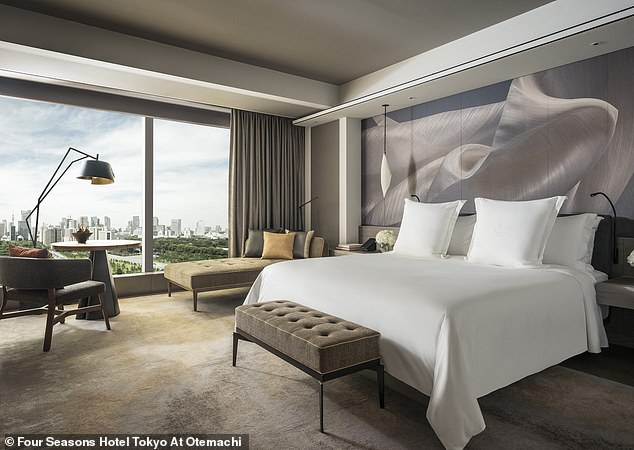
Harriet checks in to Four Seasons Hotel Tokyo At Otemachi
There’s a lot of competition when it comes to luxury hotels in Tokyo - but one property that stands tall amongst the five-star crowd is Four Seasons Tokyo at Otemachi.
Spanning the top six floors of a 39-storey high rise, its location offers the best of both worlds - set right in the heart of the city’s busy skyscraper-packed financial district, yet just metres from the 280-acre expanse of the Imperial Palace, where the Emperor and his family reside, and which can be explored on foot for free.
The hotel offers what has to be one of the world’s best breakfast buffets (think baked local treats from the in-house bakery, trays of miso soup and udon noodles topped with salmon roe, fizz on tap). But beware - you’ll find it almost impossible to tear yourself away from the expansive spa, home to five treatment rooms, Japanese-style baths, and a 20-metre swimming pool with sweeping city views (you can see Mount Fuji on a clear day).
Fancy a trip on the bullet train? Tokyo Station, where bullet trains whizz by every two to three minutes, is just 10 minutes away on foot (fourseasons.com/otemachi).
SHIBUYA CROSSING
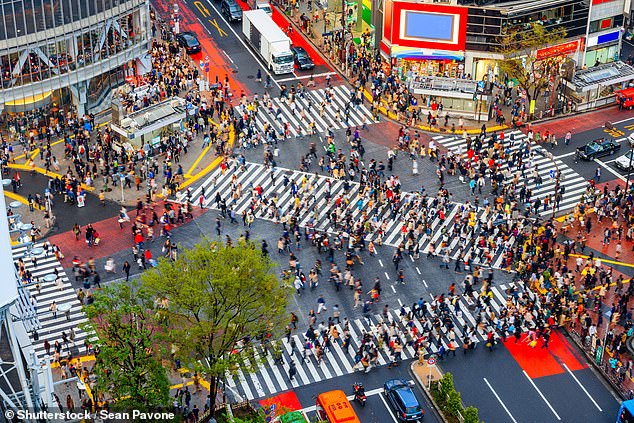
Shibuya Crossing halts all cars every 80 seconds, when up to 3,000 people wait for the lights to turn green before scrambling in all directions across five crosswalks
One of the busiest crossings in the world, a visit to Tokyo isn’t complete without a trip to Shibuya. Rather than direct the flow of cars and pedestrians simultaneously, the Shibuya Crossing halts all cars every 80 seconds, when up to 3,000 people wait for the lights to turn green before scrambling in all directions across five crosswalks.
Yes, it’s become crammed with tourists but that adds to the mayhem. For the best vantage point, head to the Starbucks on the northern corner and sip on coffee while watching the ant-like figures race around below.
The intersection is most impressive after dark on a Friday or Saturday night, when the crowds are at their thickest and neon-lit by the signs and flashing TV screens above.
TSUKJI FISH MARKET

Harriet at Tsukji Fish Market, one of the world’s biggest fish trading centres
Hundreds of tightly packed traders sell an encyclopaedic range of creatures - some dead, some alive - at Tsukji Fish Market, one of the world’s biggest fish trading centres.
Be sure to dine at one of the restaurants that spill out from the market stalls, most of which specialise in, you guessed it, seafood.
Not a fan of fish? There’s plenty on offer for meat lovers and vegetarians, from smoking stalls offering plates of marbled wagyu beef, to counters piled high with omelettes on sticks (in fact, every variation of food appears to be presented on wooden sticks).
There’s also an array of specialist gift shops, selling everything from kitchen knives to rubber boots.
You’ll need at least three hours to make the most of it.
MEIJI JINGU TEMPLE

Choose Meiji Jingu (above) over the chock-a-block Senso Ji Temple, says Harriet
Tokyo’s grandest shrine is dedicated to Emperor Meiji and Empress Shōken, whose reign (1868–1912) coincided with Japan's transformation from an isolationist state to a modern nation.
Built of cypress wood, the main shrine is set in a wooded grove, but occupies only a small fraction of the sprawling forested grounds, which contain some 120,000 trees collected from all over Japan, and several towering wooden torii (entrance gates). Head here on a Saturday and you may catch a local wedding, where a procession follows the bride, who’s dressed in a white hood called a wataboshi, and walks under a giant red parasol. It feels a world away from the nearby neon-drenched districts of Shibuya and Shinjuku.
Exit out of the southern gates and you’ll pass a huge wall of beautifully painted hanging sake barrels, donated by brewers of the national drink from all over Japan. (It’s also a brilliant spot for pictures.)
Choose Meiji Jingu over the chock-a-block Senso Ji Temple (the city’s most visited). Controversial, I know…
BULLET TRAIN

Hop on a bullet train in Tokyo for a high-speed ride through cities, farms and past snow-covered Mount Fuji
Japanese people didn’t invent rail travel, but they perfected it.
Instantly recognisable for its striking, sloping nose and sweeping aerodynamic curves, the Shinkansen was the world's first high-speed train and quickly became known as the bullet train. The trains travel at speeds up to 200mph, whizzing passengers picking on bento boxes through cities, farms and past snow-covered Mount Fuji. The carriages are quiet, spacious and offer reversible seats.
When travelling from Tokyo to Kyoto, pick a seat in advance on the right-hand side for Fuji views.
THRIFT SHOPS
With the pound strong against the yen, there’s never been a better time to pick up some bargain vintage clothes in Tokyo. Shimokitazawa, a former farming town in the west of the city, is a hip creative quarter with a lingering old-Tokyo vibe and one of the largest concentrations of thrift stores in the city.
Narrow, mural-painted lanes are lined with coffee shops and stylish stores packed full of vintage clothes, battered books and vinyl records.
Be sure to pop into Flamingo, Joe's New York Exchange, and Chicago, all of which house carefully organised racks of clothing to suit every style and subculture. It's the perfect antidote to hectic city life.
VIEWS, VIEWS, VIEWS
Pop into any high-rise building or rooftop bar and the views are bound to awe and inspire as Tokyo’s sprawling landscape unfurls, stretching far into the distant land as though you’ve landed on a planet of never-ending cities.
Get dressed up for cocktails at Park Hyatt Tokyo – which was featured in Lost in Translation - on your first night in Tokyo. A perfect introduction to one of the world’s best cities.

Touching down in Tokyo is like landing on a different planet, with few - if any - familiarities, declares Harriet


























